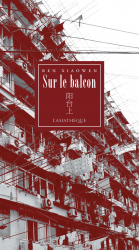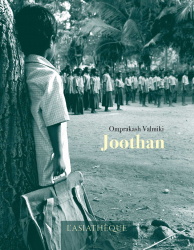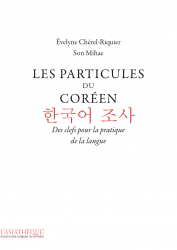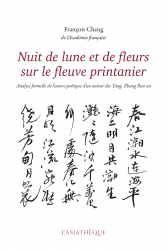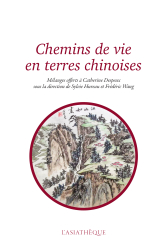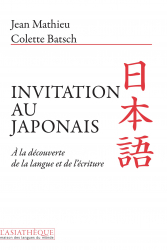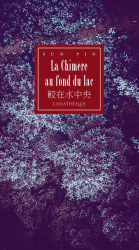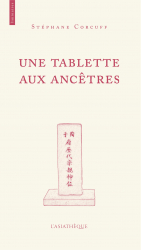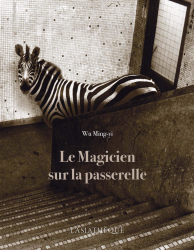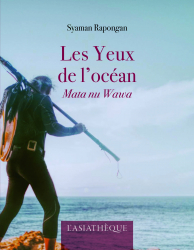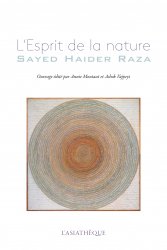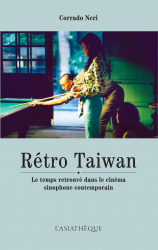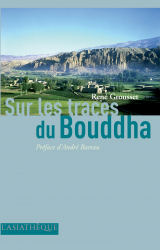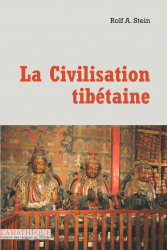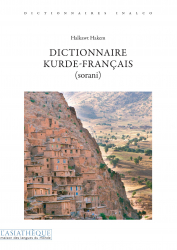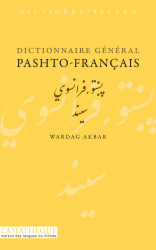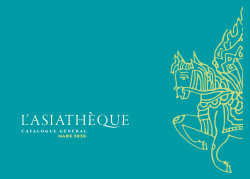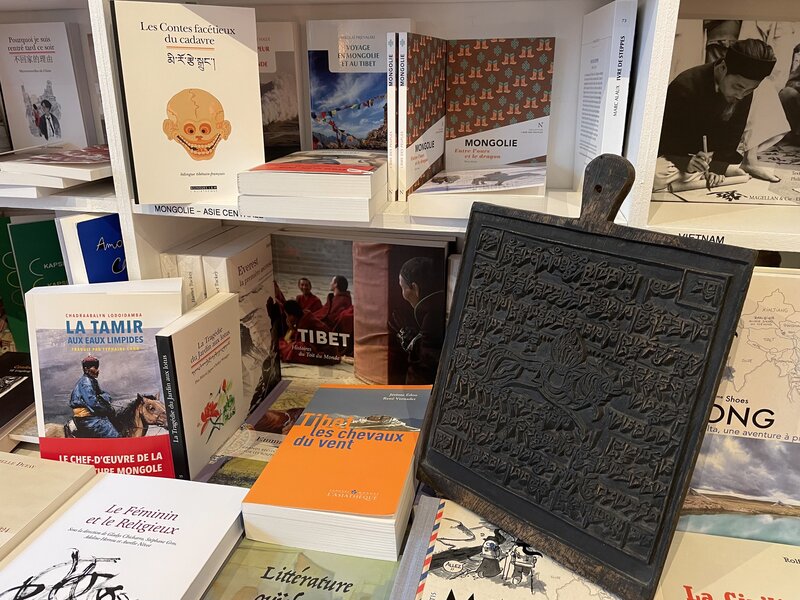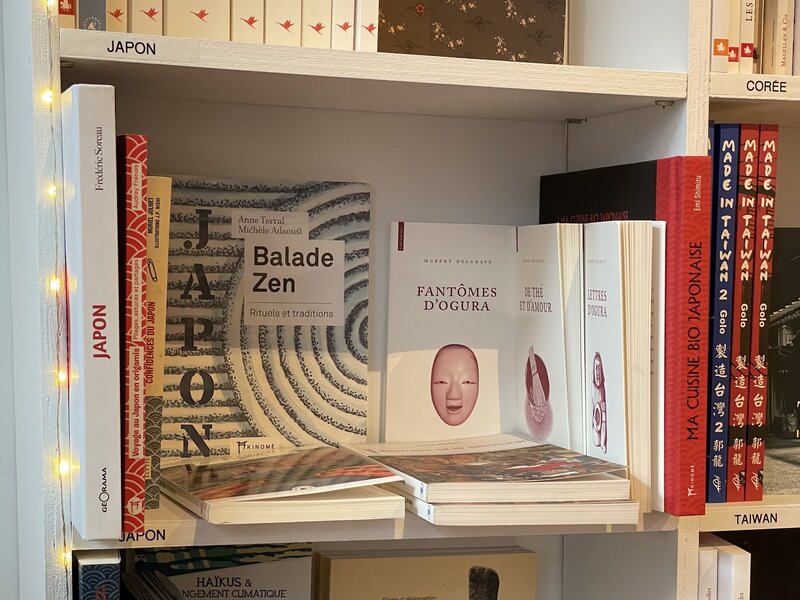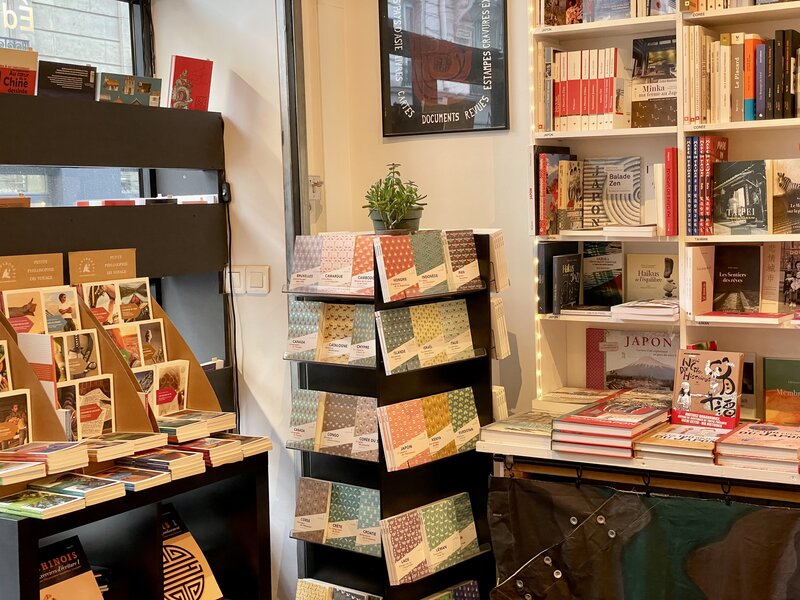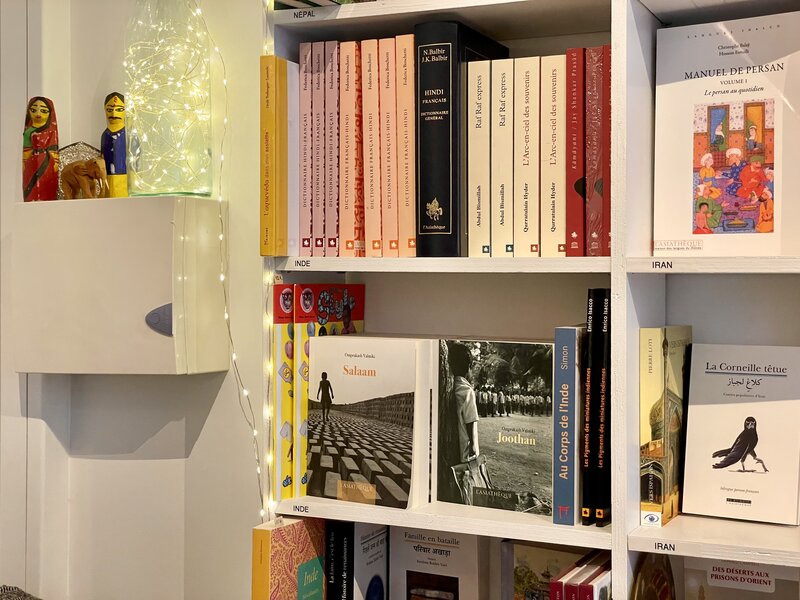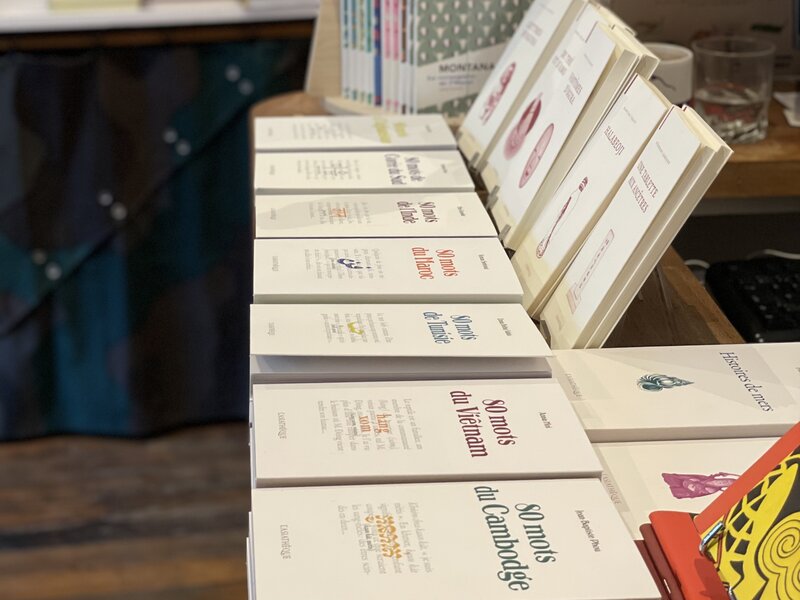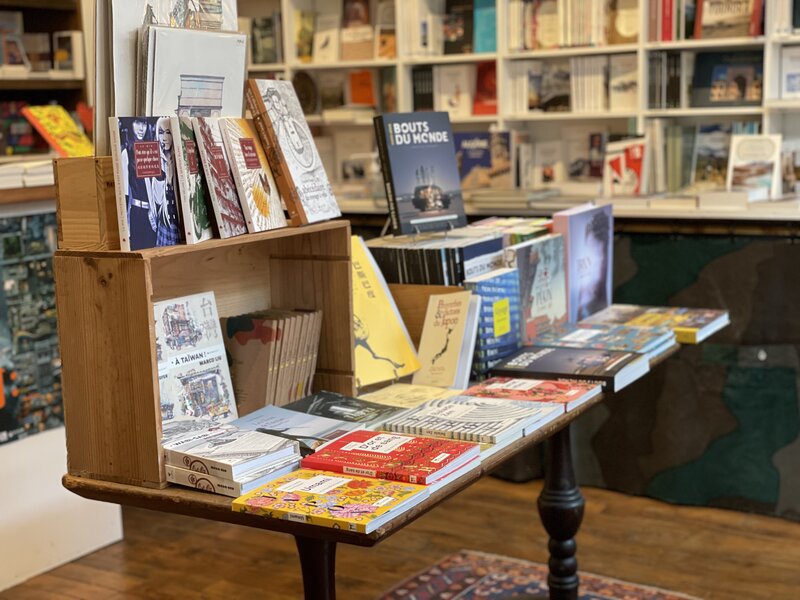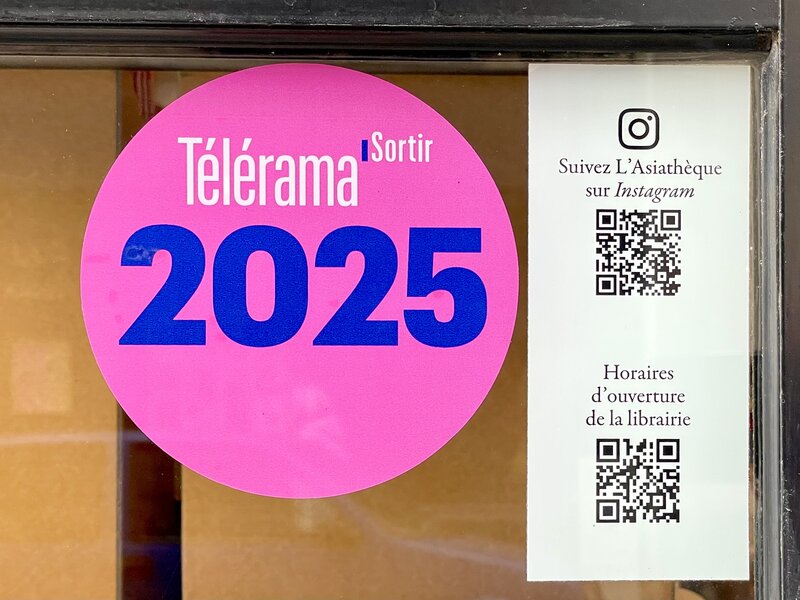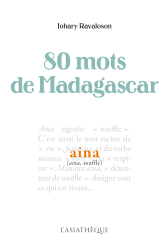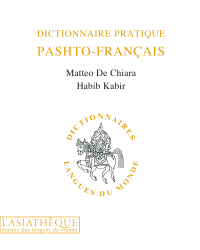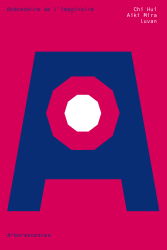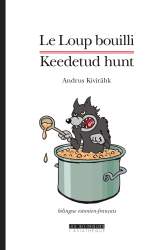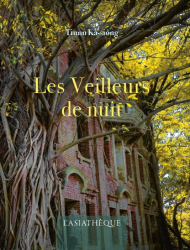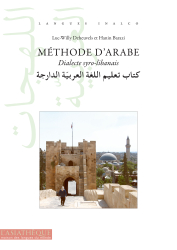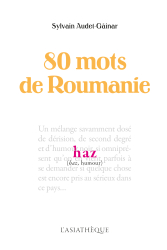Literature and Knowledge
Annie Montaut, ...
L’Esprit de la nature : Sayed Haider Raza (The Spirit of Nature: Sayed Haider Raza), is a collective work edited by Ashok Vajpeyi and Annie Montaut, bringing together contributions from art critics, artists and art historians concerning Sayed Haider Raza, one of the major painters of the twentieth century who lived in France, but was still immersed in Indian culture. It aims to articulate the spiritual dimension of his work that all critics unanimously recognise in the artist's paintings - an ethics of cohabitation with nature. The mode of cohabitation offered by Raza's abstract art is understood as a partnership that establishes respect and love for the elementary universe in conjunction with the feeling of being consubstantial with them. To this he adds secular Indian traditions, both in the great classical texts and in popular beliefs and literature oral or written vernacular. The original trajectory of Sayed Haider Raza (1922-2016), born and raised in the middle of the forests of Central India, then co-founder of the Bombay Progressive Artist Group, member noticed from the Paris school in the fifties before defining himself outside any school or any movement, focusing on indian aesthetic and philosophical traditions, is the subject of the first part (autobiographical texts by Raza, Vajpeyi). The second places it in the history of Indian and Western art (Waldemar-George, Gaudibert, von Leyden, Dalmia). The third develops a series of more technical analyzes of art and aims of the painter (Bartholomew, Hoskote, Padgaonkar, Vajpeyi, Shahani, Puskale). The last section gathers memories of painters friends and interviews (Khanna, Kumar, Nair). The introduction is by Annie Montaut.
Chu Tien-wen, ...
The first original screenplay published in French of a Chinese-language film, the screenplay for the City of Pain (Golden Lion in Venice in 1989), a masterpiece of Taiwanese cinema directed by Hou Hsiaohsien, is presented here as a literary work. Co-written by Chu Tien-wen and Wu Nien-jen, it makes us feel intimately, through the abundant and tragic story of the Lim family, the “pains” of the island of Taiwan following the dramatic events of February-March 1947, a tragic episode that no film had yet dared to mention. The reader will be able to appreciate the complexity of the political situation and social relations at the time when the Japanese colonizer is giving way to the authoritarian government of the Republic of China. They will (re)discover a brilliant woman of letters well known for her novels and short stories, and a remarkable screenwriter-dialogue writer (and director). They will also gain an in-depth understanding of a powerful and original cinematographic work through both its political and its memorial approach.
Cédric Laurent
The Ming scholars (1368-164) [...] felt that "in meditation, in the mountains, the days lie down ". They listen to the streams, the waterfalls, the sounds that match the beats from the heart with a delicacy where the subtle becomes indistinguishable and indistinguishable. They enter little by little little in nature and in a state where all the sounds perceived simultaneously plunge them into the ultimate silence, where not one noise wins over another. This is "to find your Heart", in Chinese xin, a term which designates both the heart as that organ, and the mind, the center of being. [...] Many painters have thus made meditation one of the themes of their painting, theme little put forward until this study by Cédric Laurent who, through the presentation of very beautiful texts, poems and paintings, sensitizes us to this aesthetic and to this philosophy of being developed and put into practice by scholars of the Ming, a golden age for Chinese landscape painting. He makes us realize the importance of meditation in them and among the neo-Confucians, especially those from the School of the Heart, who reinterpreted the texts classics of Confucianism in relation to Buddhism and Taoism. (Extracts from the preface by Catherine Despeux)
Gladys Chicharro et al.
""Le féminin et le religieux" (the feminine and the religious) is the expression used by Brigitte Baptandier in reference to the red thread that runs through her ethnological research on China since 1979 and crosses her questioning on the liturgical and shamanic traditions of Taoism. The title of this book, which we dedicate to her, was therefore quite appropriate, and it is this same red thread that the eight authors who contribute to paying homage to her have followed in order to explore further what the feminine and the religious held together can tell us not only about China of yesterday and today, but also, in a comparative perspective, about European and Indian traditions." (Excerpt from the Introduction)
This book, which brings together contributions from eight scholars in different fields, invites reflection on the complex and multiple links that connect the feminine and the religious. Family disorder, illness, suicide, pregnancy, infanticide, broken or thwarted designs, death, masculine and feminine creativity, begetting, rituals and the relationship to the afterlife are some of the themes that this book addresses through ethnography, history, literature, mythology and psychoanalysis. The different cases presented in this book question the ritual prohibitions in various religious contexts with regard to the conceptions of a pollution of the feminine, linked in particular to blood. They also show that the resulting forms of asymmetry between men and women do not prevent the existence of a specifically feminine power to act. Finally, they contribute to the reflection on the game of possibilities, via the phenomena of inversion or indifferentiation.
Book published under the direction of Gladys Chicharo, Stéphane Gros, Adeline Herrou and Aurélie Névot.
Corrado Neri
Analysis of vintage taste in sinophone cinema. The author synthesizes the major works that have studied this movement, more complex than just mere nostalgia, and seeks to identify what Taiwanese, Hong Kong or Chinese people try to express based on detailed analyzes of Hou Hsiao-Hsien, Edward Yang or Tsai Ming-Liang's movies.
Fang Fang
Emile Guimet Prize for Asian Literature 2020.
The novel 'Funérailles molles' tackles the sensitive and disturbing subject of the Agrarian Reform in China. Having preceded the Cultural Revolution by ten years, it is one of the most deadly episodes in the country's recent history, seldom covered in Chinese literature owing to the taboo associated with it. Inspired by a true story, the novel begins with veiled hints at the painful events that a young woman experienced and which she kept hidden throughout her life, because the memories were unbearable. Having now grown older, she suddenly sees the past resurface violently and, the shock, having caused her extreme distress, compels her to internally relive, step by step, the tragedies that she tried to erase from her memory while her son struggles to reconstitute them - until the moment he gives up, deeming it preferable to forget. This novel appears both as exceptional documentary evidence and as a major literary work. As interesting in substance as in form, it goes beyond the framework of the Chinese Agrarian Reform to deliver a universal and still current reflection on the temptation to forget and the duty to remember in a context where historical truth is elusive.
Xia Jia
The novella Ton temps hors d'atteinte offers to readers a surprising love story, considered over a long period of time, from childhood to adulthood. Written in an original way by a “me” (the narrator) addressing a “you” (the loved one), it tells the story of two beings as different from each other as they are from those around them, constantly playing on contrast and shift, concepts brilliantly embodied in the narration of the different times to which the two protagonists belong. Ending in a sort of tragic road trip like "Bonnie and Clyde", the novella unfolds patiently and subtly, according to the protagonist's different memories. The science fiction element of the novella only really reveals itself in the last part of the text, evoking other works by Xia Jia: a subtle, unspectacular innovation but which suggests the possibility of an inventive technology in the service of human rather than destructive and threatening. It is in this combination of romance and science fiction, both delicately brought together, that the success of the text is undoubtedly found. As Xia Jia herself mentions in her collection of short stories: “The most beautiful science fiction stories are not so different from the story of first love.”
Omprakash Valmiki
The collection of short stories Salaam (« Allégeance »), translated from Hindi and published in India in 2000, offers 14 short stories dealing with the issues constantly faced by the population of the lower castes, also referred to as the dalite community. Some of the short stories take place in an urban surroudings with the emergence of an dalite "elite" who must hide the caste they come from in order to find an housing and manage to mix with the neigboors. However, as soon as their statut of untouchables is revealed, they become subject of denigration and sudden spurge of hate and aversion from the neigboors. This change of behaviour toward dalits also occures at work, especially for those working as office workers, as humilation, act of intimidations and harassement at work become common practices once they are seen as part of the dalite community. Other short stories take place in village, considered as a heavenly place according to the ideals of Gandhi. Yet, for the untouchables, villages are hellish places where arbitay and tiranic power prevails along with social injustice, feodalism, capitalism and Brahmanism, which characterised somehow the hindouist system. The author expresses himself in his short stories in the third person and often resorts to dialogue. The descriptions are both concise and meticulously detailled. The facts speak for themselves and awaken readers to the harsh reality of the Dalite community, making them aware of their suffering and ultimately bringing them to a state of consciousness that makes possible a social change that can restore the dignity of those who have been deprived of it for centuries.
Hubert Delahaye
There is an art of living well and aging well in Japan. The author invites us to discover it in Ogura, a small village nestled in the hollow of a valley at the foot of the mountains around Kyoto. Hubert Delahaye spent his professional life at the Collège de France in the field of sinology. He was attached to the Chair of Social and Intellectual History of China by Jacques Gernet and then to the Institutes of the Far East as a lecturer. It is natural that he was also interested in Japanese neighbors, those islanders so close to the Chinese and at the same time so different. For years, Hubert Delahaye has regularly immersed himself in this miniature world where, despite the passage of the seasons and a world in full mutation, time seems suspended. Borrowing the gaze and voice of one of his inhabitants, an old lady with confounding benevolence and wisdom, he brought back these letters, an impressionist painting of an intimate Japan. The evocation of a nature overflowing with life where men and beasts coexist in a delicate harmony is accompanied, in a subtle counterpoint, by reflections on the relations between generations, respect for religious traditions, social assistance, the abandonment of the countryside, but also the memory of a painful past, the upheaval of climate or cracks in family ties, all stakes for contemporary Japanese society. The old lady seems to be telling us: "I was born, so I'm here, and no matter how bad the world is, it's good to live, grow old and even die in Ogura."
Lim Chul-woo
Since its first publication in Korea in 1991, Je veux aller dans cette île (The Island) has attracted widespread public attention, owing to its unique style. Through a series of dramatic, authentic, and frankly comic episodes, Lim Chul-woo brings the reader on a journey with him to his home island. Remembrance, tenderness, tradition: these are a few of the subjects that The Island touches on, along with the beauty of human relations in these rural communities, isolated from the modern world. Lim Chul-woo, born in 1954, is the author of various powerful works that have earned him prestigious literary awards and international recognition. Je veux aller dans cette île (The Island), directly inspired from the world of his childhood, has been adapted into a film (Kŭ sŏm'e kago sipta / To the Starry Island) which he co-wrote with Lee Chang-dong (who also wrote the postface of 'Je veux aller dans cette île') and which was directed by Park Kwang-su.
'Je veux aller dans cette île' : the French version, was published by L'Asiathèque on September 4th 2013. You can now read an extract from 'Je veux aller dans cette île' here, or a review (in French) by the Corée Magazine here.
'The Island' : the English version is available in English bookstores.
Kim Tak-hwan
South Korea, April 16th, 2014; the Sewol shipwreck cost the life of 304 people, most of them teenagers on a school trip. An huge scandal that highlights multiple failings, especially in the organization of coastguards. This drama and its aftermath will contribute to the deposition of former korean president Park Geun-hye. The story takes the form of a written statement of the narrator - a professional diver - intended to exonerate one of his colleagues who is accused of manslaughter. He evokes the infernal search for corpses through the obscure labyrinth of the wreck, the serious trauma suffered by the divers and denounces the carelessness with which the operations were carried out, as well as the unfair accusations held against those who have devoted themselves to return the bodies to the families. The author does not cite the name of the ship, nor those of the real protagonists, as he wish to give the novel an universal scope. He indicates in the afterword that the diver he used as model passed away. The investigation following his death led to the conclusion of a suicide. Kim Takhwan, born in 1968, is the author of successful historical novels, which have regularly been adapted to television. A committed writer, he draws his themes from Korean history to denounce injustices, call for a citizen revolution and encourage civic action. Only one of his books, Les Romans meurtriers, has been translated in French and published by Philippe Picquier, in 2010.
Mahmoud Bayazidi
At the request of the Russian consul in Turkey, a Kurdish Sunni mullah describes the main aspects of social organization and Kurdish traditions: the structure of family and villages, the place of women, rules of conduct, festivals and ceremonies , religion and beliefs. Sandrine Alexie is both writer and translator. Author of novels on mythical, medieval or contemporary Kurdistan, she also translated Mem and Zîn from Ahmedê Khanî, a masterpiece of classical Kurdish literature, which is co-published with Geuthner.
Syaman Rapongan
Syaman Rapongan, author belonging to the indigenous group of Tao and who likes to define himself as a writer-fisherman, looks back on his youth, when he left his native island of Botel Tobago (Orchid Island off the east coast of Taiwan) to join the Taiwanese “mainland”. In this largely autobiographical work, Syaman Rapongan recounts how he was encouraged to leave his birthplace and that of his ancestors to find work in the "civilized" metropolis. He tells about his identity mistakes, the discriminations he suffers, both as an indigenous and as a proletarian, and also what pushes him to reconsider the value of the culture of his ancestors, and finally, to return home and to fight. for the recognition of the rights of its people.
The Taiwanese social chronicle of the 1970s and 1980s, at a time when Indigenous people were still considered backward and savage, Les Yeux de l’océan - Mata nu Wawa ("Eye of the sea - Mata nu Wawa") offers another facet of the "Taiwanese economic miracle." With a pen both full of anger and hope, Syaman Rapongan recounts how the injustices of yesterday have helped to shape today's Taiwan and how the cultural heritage of the Formosan indigenous people can regenerate contemporary Taiwanese culture by situating it in a new transpacific dynamic. Despite his double marginalization, as an indigenous and as a Taiwanese, Syaman Rapongan also shows how Taiwan can participate in debates about the future of the world.
Rene Grousset
René Grousset follows the two Chinese pilgrims Hiuan-tsang and Yi-tsing across the Gobi desert and the Pamir mountains, as they risk their lives to find knowledge, manuscripts, and Buddhist religious objects in India. The setting is the 7th century, a time when India and China are experiencing explosions of growth in their spiritual, intellectual, and artistic cultures. Hiuan-tsang is the main hero of the book. The detailed description of the lands they travel through, of monuments, of traditions and ceremonies, of the social mores of the peoples they encounter, and of the dramatic episodes of the voyage, make this story extraordinarily vibrant. This book includes a biography of René Grousset by Pierre-Lucien Lamant, color and black and white photographs by André Bareau, Dominique Darbois, Hélène Disrens, Gérard Fussman, and a large format color map that traces the path of the two pilgrims. René Grousset, who died in 1952, was an expert who has put within reach of the public the knowledge he acquired over many years of research and reflection. He is the author of Les Civilisations de l’Orient (The Civilizations of the Orient), Histoire de l’Asie (History of Asia), L’Épopée des croisades (The Epic of the Crusades), L’Empire des steppes (The Empire of the Steppes), Bilan de l’histoire (Balance of History). The author of the preface, André Bareau was an expert in Buddhist studies who also taught at Collège de France. He died in 1993. His warm preface celebrates the talent of René Grousset and the merits of Sur les traces du Bouddha.
Rolf A. Stein
Drawing on Tibetan and Chinese literature, travellers' accounts and the work of numerous researchers, Rolf Alfred Stein (1911-1999) presents here the abundant wealth of Tibetan civilisation in all its various aspects: habitat and population, history, social organization, religion and custom, arts and literature. HHis aim is to give, through a selection of subjects, documents and facts, a general and significant view that will allow the reader to apprehend a universe where the sacred and the profane mingle in every gesture, in every sound, in every journey. The book, first published in 1962 and then revised by the author in 1987, is a particularly valuable reference book at a time when the Tibetans are facing a serious threat to the preservation of their ancestral way of life and their unique cultural traditions. Rolf A. Stein, professor at the Collège de France, held the chair of Chinese World Studies, Institutions and Concepts from 1966 to 1981, and is the author of numerous works, including the Tibetan Epic of Gesar in its Lamaistic version of Ling (1956) and The World in Small, Miniature Gardens and Dwellings in Far Eastern Religious Thought (1987). As a tribute to Rolf A. Stein and on the occasion of the centenary of his birth (June 13, 1911), this new edition ends with the In memoriam that Mrs. Kuo Liying, Director of Studies at the EFEO, has dedicated to this great scholar, and which was published in the Cahiers d'Extrême-Asie II (1999-2000).
Languages
Shim Seung-Ja
This pocket-sized dictionary contains approximately 6,000 entries. It is designed specifically for French speakers who are keen to learn Korean, or who at least wish to make sense of signs and information while traveling in Korea. The dictionary includes a grammatical introduction to Korean, and explanations of the alphabet and syllabic and sentence structures. At the end of the dictionary, you will find a list of conversational basics and other essential information aimed at making your first contact with the country as smooth as possible.
Halkawt Hakem
Sorani is spoken by more than ten million Kurds across Iraq and Iran, of whom nearly two hundred thousand currently live in Europe. This dictionary, which focuses on contemporary language, contains 22,000 entries, 3,000 variants, 2,000 subentries (compound verbs) and more than 1,000 expressions. The entries are written in Arabic characters and in Roman transcription. A reference dictionary.
Wardag Akbar
This Pashto-French general dictionary is the successor to the Pashto-French dictionary published in 1999 by l'Asiathèque. The Pashto-French general dictionary includes more than 40,000 entries from modern vocabulary, spanning the literary and technical but also the familiar and juvenile. It includes etymologically "Pashtun" words as well as the numerous Pashtun words borrowed from Persian, Arabic, Hindi and other Indian languages. The dictionary also lists regional variants for the vast part of its entries, dialectization being an important characteristic of Pashto, seeing as it is spoken by a tribal society that inhabits a terrain of steep valleys. For each entry in Pashto, a transcription in the Roman alphabet is provided, as well as the grammatical category of the word. A chapter is also devoted to past and present radicals and irregular verbs.
Jean Mathieu, ...
A few hours of reading, 400 ideograms, 1,000 useful words, and a conversation guide. This book encompassing many aspects of Japanese life and culture is perfect for business people, engineers and scientists, foreign interns and residents in Japan, university students, tourists, and all those who wish to improve their knowledge in the comfort of their own home. Jean Mathieu, a chemical engineer, and his wife Colette Batsch, a visual artist, developed a passion for Chinese and Japanese ideograms and the Japanese language in general after travelling extensively in Japan. With this book, they set out to rid people of their inhibitions faced with these complex characters, which at first glance appear so abstruse, and to show them that once they have taken their first steps, they will enter a fascinating world filled with excitement and discovery.
The royalties on the sales of this book are donated to the Foujita Foundation, dedicated to promoting the education, training and integration of young people disadvantaged by educational, social or familial issues.
Luc-Willy Deheuvels
New Méthode d'arabe - arabe littéral - volume 1 (published 2022 Feb 16).
This book offers a guide to modern Arabic, the national language of all member countries of the Arab League, very close to the classical registers of the Koran and medieval literature. This first volume is devoted to standard Arabic, used universally in writing (literature, press, correspondence, signs and panels, etc.) and in certain oral contexts (radio, television, speeches, conferences).
This method is designed to acquaint students with the Arabic language as quickly as possible within the framework of a university education. It is also intended for the self-taught learner and gives them all the elements they need to progress independently. Almost all written Arabic is produced without the short vowels written in.
This method is designed to allow the beginner to familiarise themselves with this reality as smoothly as possible. Learning to read without vowels is one of the essential goals of this method, which proposes the progressive acquisition of the different patterns of the language. The importance given to oral expression is illustrated by numerous dialogues designed to make learning more lively and spontaneous. This learning process is supplemented by audio material: recordings of all the texts, solutions to the reading and speaking exercises (to be listened to directly in the book with the QR codes and also available to download free of charge).
At the end of the book there are the vocalized texts, a French-Arabic lexicon and an Arabic-French lexicon.
Levels A1 and A2 of the Common European Framework of Reference for Languages (C.E.F.R.L.)
Volume 2 (levels B1 and B2) is being preparared as well as the following dialect handbooks: « Méthode d’arabe - arabe marocain » ("Arabic method - Moroccan Arabic"), « Méthode d’arabe - arabe syro-libanais » ("Arabic method - Syro-Lebanese Arabic"), Méthode d’arabe - arabe tunisien » ("Arabic method - Tunisian Arabic" ), « Méthode d’arabe - arabe koweïtien » ("Arabic method - Kuwaiti Arabic"). All these works are authored by Luc-Willy Deheuvels with the help of the various teachers concerned at INALCO (National Institute of Oriental Languages and Civilizations in Paris, France).
- A book resulting from a long experience of teaching, compellingly presented, richly illustrated, with numerous texts and exercises.
- Accompanying booklets in different dialects of Maghreb and Middle East are being prepared.
- Extreme attention to speaking: full recording of oral readings and exercises.
Luc-Willy Deheuvels
Levels B1 and B2 of the Common European Framework of Reference for Languages (CEFR)
Learning Arabic is not just about acquiring a means of communication; it is also about discovering, through the language, a rich and fascinating world.
The Méthode d'arabe - arabe littéral volume II (Arabic Language Method literal Arabic - volume 2) continues the learning process begun with the first volume. The language taught is modern Arabic, the national language of all the member countries of the Arab League, very close to the classical registers of the Koran - the sacred reference for all Muslims - and to the language of medieval literature. It is used everywhere in written form (literature, press, correspondence, billboards, etc.) and in many spoken contexts (radio, television, speeches, conferences, etc.).
The aim of this course is to provide the learner, whether supervised or self-taught, with the knowledge they need to deal with modern documents on their own, with a broad view of the classical world. The emphasis is on the acquisition of basic syntactic and morphological structures. Learning to read without vowels is one of the essential aims of this method, which proposes the gradual acquisition of the main patterns of the language. Everything has been thought out so that everyone can navigate through vowel-free texts without difficulty, while learning to vocalise an utterance in its entirety. Numerous dialogues make learning lively and spontaneous. The texts and new vocabulary are recorded, along with a large number of exercises that include an answer time for each question, followed by the answers. These recordings can be downloaded from L'Asiathèque's website or accessed by QR codes throughout the book. Each lesson presents the essential grammar rules, illustrated by specific applications. At the end of each lesson, a large number of written exercises enable learners to improve their written and oral expression, reading and comprehension skills. All the answers to the exercises, vocalised texts, an Arabic-French lexicon, a French-Arabic lexicon and a grammatical index are included at the end of the book.
Isabelle Rabut et al.
To promote listening comprehension and oral expression, this is the guideline of this book, which is accompanied by a rich sound recording (QR codes inside the book and audio download on the site). Used during the initiation year of the National Institute of Oriental Languages and Civilizations (Inalco), it precedes the Chinese Method, second level (L'Asiathèque, New edition 2017) designed for the License 1 of this establishment . Based on a communicative approach, this first year Chinese textbook provides an understanding of the language through not only grammar and vocabulary lessons, but also oral practice. The book covers a range of situations such as how to introduce yourself, recount an experience, position yourself in a conversation, etc. The logic of the language is also taught through the rules of syntax, lexical constructions and structure, of the characters. The second part of each lesson is devoted to learning Chinese characters (approximately 30 per lesson). Each of the fourteen lessons is divided into two parts, one focused on speaking, the other on writing (learn about 30 characters, study a text, and exercise). Review lessons provide regular updating of acquired knowledge. The answers to the written exercises can be downloaded free of charge from this site (see Media page). Supplement to the method (free): Pinyin transcription of texts and dialogues Also available to accompany the Chinese Method, first level: CHINESE writing exercises I and Chinese vocabulary first level - practice and deepening.
Antoine Chalvin
Along with Finnish and Hungarian, Estonian is one of the three main Finno-Ugric languages spoken in Europe. It shares with the other languages of this family many features which make it distinguish Indo-European languages: a largely agglutinative morphology based on suffixation, a rich system of declension (14 cases), the absence of article and gender grammatical, the absence of the verb “have”, numerous postpositions, oppositions of length for almost all vowels and consonants, etc. Estonian has developed also some particularities, such as a specific verbal mode to transmit the information reported. By differentiating from Finnish, it lost some of its suffixes, which introduced into its nominal morphology of numerous homonyms and irregularities. From his contacts with German, it inherited in particular a system of phrasal verbs and a tendency to place the verb at the end of a clause in certain contexts. All this grammatical complexity is presented here in a methodical way, in a language accessible to as many people as possible. The presentation is illustrated by short constructed sentences and authentic examples — taken from literary works of the 20th and 21st centuries - which allow us to glimpse all the richness expressive of the language.
Sarah Hermann
“You must have pulled yourself away from everything, me from nothing. You are migrants and you must be born a second time. I teach you to say "I am" in the indicative, the imperfect or the future tenses. But how "to be" when you have lost so much? "(Marie-France Etchegoin, "I am learning French", Jean- Claude Lattés, 2018). It is in this approach of respect for the learner and for her or his language that Sarah Hermann stands. The method is classic: dialogue, vocabulary, grammar, exercises, but the novelty lies in bilingualism. Each lesson is given in French (mainly at used by teachers) and in Pashto. Knowing well the grammatical structures of pashto and nourished by her teaching experience and her career in action humanitarian, Sarah Hermann points out the differences in pronunciation or construction phrases that Pashtophones can run up against by prescribing each time to teachers and learners checking and rehearsing. The book contains many exercises (with answers) and fun pictorial materials designed both as debriefings and moments of personal expression. An audio recording allows the learner to listen to the lesson again, to become familiar with the French pronunciation and practice (available via QR codes along the book or with free download on this website). Thus given confidence, the Pashtophone learner avoids stress, "the main enemy of lessons languages ”(ibid, M.- F. Etchegoin), and is progressing rapidly.
Henri Tonnet
The Modern Greek Method, now accessible in one volume, is not a collection of formulas for passive assimilation. The grammatical questions that a francophone necessarily asks are not evaded. They are explained in the simplest way and illustrated by dialogues and exercises. The student learns to orient himself in the case system, to choose between the verbal aspects and to properly accentuate the nominal and verbal forms. He thus acquires a reasoned knowledge of the language. Two glossaries and grammar tables complete the book. Nearly two and a half hours of audio (to download here); the answers and glossaries allow the use of this method in class and self-learning.
Jérôme Samuel, ...
With about 200 million speakers, Indonesian, the official language of the Indonesian Republic, is by far the main spoken language among the Austronesian languages. The Manuel d'indonésien (Indonesian Language Manual) is first dedicated to standard Indonesian, that is to say the language of newspapers, administration, teaching and professional relations, but it gives a significant place to everyday Indonesian, used for chats and informal relations. With this book, the learners will acquire most of what they need for exchanging in an Indonesian environment after a year of studies. It presents 24 lessons and 5 units Révisions et bilan (Revisions and assessment) which will allow the students to measure their progression. Each lesson includes: a dialogue; a list of vocabulary; a grammar course, many exercises and a rich written, audio and iconographic material (over 150 illustrations in full colour). Cultural complements are added to one lesson out of three. A bibliography and an Indonesian-French lexicon are given at the end of the volume. Two hours of audio recordings are going along the manual and can be downloaded for free here. A number of complements can be found here : translation of the dialogues, keys to exercises, transcription and translation of the records concerning oral understanding exercises. Conceived for the learner to reach level A2 (CECR). Jérôme Samuel is a senior lecturer at INALCO (National Institute for Oriental Languages and Civilisations, Paris). Saraswati Wardhany has been a teaching assistant at INALCO and taught French at the French Cultural Centre in Bandung.
Cybèle Berk, ...
This book follows the Turkish language method Volume 1 and offers a comprehensive study of modern Turkish. Conceived to help intermediate ans advanced level learners, it provides an overview of Turkish grammar and gives to know the Turkish vocabulary in all its diversity. The purpose of this second book is to continue through a pedagogical adapted approach, the program initiated by the first, the aim is to gradually introduce the essence of contemporary Turkish language in both volumes. What sets differently this volume from the first one is the progression from texts designed for the need of the initial learning to authentic texts from various authors, with their natural and original, but also unexpected forms. The study of authors' texts is certainly an efficient way to immerse oneself in a language and its culture. At the same time as being a learning tool, this book can be seen as an anthology allowing a wider audience interested in the cultures of the world, to better know great figures of Turkish literature. Cybele Berk is a lecturer, Michel Bozdemir is a professor at the National Institute of Oriental Languages and Civilizations.
To see the 2026 general catalog of L'Asiathèque, click here.
Emna Belhaj Yahia tells how she chose her 80 words from Tunisia.
Episode 2: The liberating power of fiction, Hubert Delahaye, China and Japan
Véronique Arnaud, a great anthropologist and specialist in the language and culture of the Tao, recently passed away.
Syaman Rapongan at Mollat Bookstore (Bordeaux)


